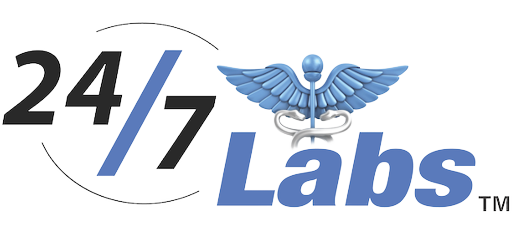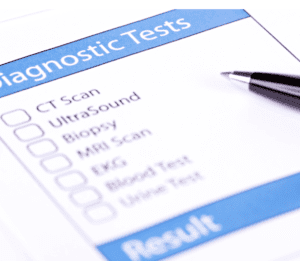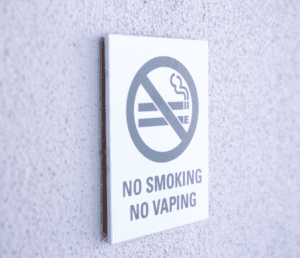Understanding the Achilles Tendon Injury that Benched Aaron Rodgers

Injury-–an athlete’s worst fear. For Aaron Rodgers, the New York Jets star quarterback, it’s an unfortunate reality.
If you’ve been following the NFL recently––the season kicked off September 7–– you’re likely aware of the buzz surrounding Rodgers and his Achilles tendon injury. Known for his incredible talent and versatility on the field, Rodgers sustained a tear to his left Achilles tendon during a Sept. 11 game against the Buffalo Bills. The injury proved season-ending, shifting Rodgers’s priorities from scoring touchdowns to scheduling surgery.
Whether you’re a fan of Rodgers or not, you may have questions about his injury, healing journey, and what the Achilles tendon is. (No shame for the latter!) If our assumptions are correct, you’ve come to the right place to learn about the Achilles tendon injury-to-recovery process.
How it Happened
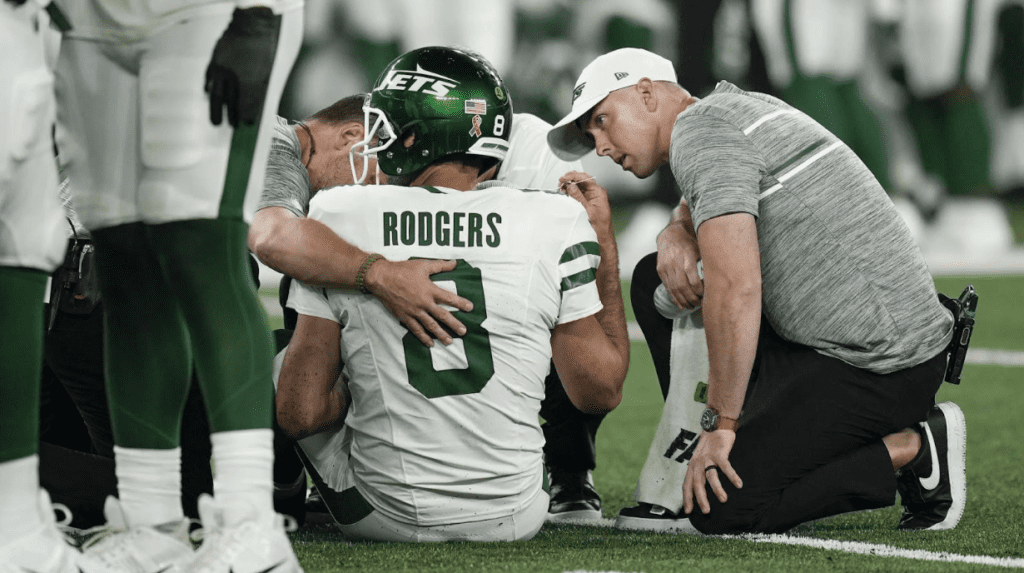
On Monday evening, Rodgers and the New York Jets took the field against the Buffalo Bills for their first game of the season. An eagerly anticipated matchup, the spotlight was on Rodgers for his debut as the team’s newly minted quarterback. (At 39, he’s also one of the most iconic quarterbacks in NFL history. In case you didn’t already know.)
Four plays into the game, Rodgers got tackled with the ball in hand. While his convergence with the ground looked inconsequential, Rodgers hobbled off the field with assistance and sat out for the game’s remainder. Then came the news update about his fully torn left Achilles tendon.
“I’m completely heartbroken and moving through all of the emotions, but deeply touched and humbled by the support and love,” Rodgers expressed through Instagram on September 14. “Please keep me in your thoughts and prayers as I begin the healing process today. The night is darkest before the dawn. And I shall rise yet again.”
While injuries in sports are, unfortunately, as common as touchdowns and field goals, the Achilles tendon is not something to be messed with. Here’s why.
Understanding the Achilles Tendon
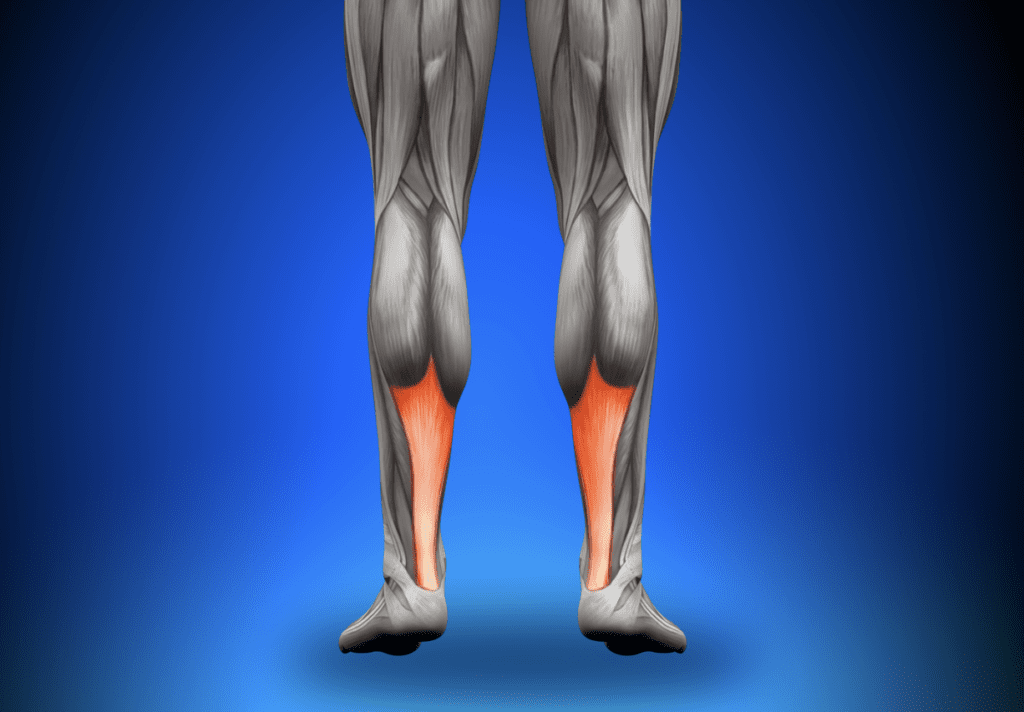
Before we go any further, let’s take a moment to understand the Achilles tendon and why it’s so crucial for athletes, especially in high-impact sports like football.
The Achilles tendon is the largest tendon in the human body, connecting the calf muscles to the heel bone. The primary function of this thick, fibrous band of tissue is to facilitate the foot’s movement, allowing us to walk, run, jump, and perform various physical activities. This tendon is under constant stress, especially in athletes who rely on explosive movements and rapid changes in direction.
When the Achilles tendon is injured, it can be a devastating setback for athletes, as it significantly impairs their ability to perform. This injury can range from minor strains to complete tears, and its severity determines the extent of an athlete’s downtime and the complexity of their recovery.
Breaking Down the Achilles Tendon Injuries
When the Achilles tendon is injured, it can be classified into different grades or stages based on the severity of the injury. The most common classification system for Achilles tendon injuries is the Thompson or O’Brien classification, which divides Achilles tendon injuries into three grades:
Grade 1: Strains
The most common Achilles tendon injuries are strains. These occur when the tendon is stretched beyond its normal capacity, leading to microscopic tears. These strains typically result from overuse or sudden increases in physical activity. Other contributing factors include inadequate warm-up, improper footwear, muscle imbalances, and poor biomechanics.
The symptoms of an Achilles tendon strain can vary in severity but often include pain, tenderness, and swelling in the back of the ankle or just above the heel. Some people may also experience stiffness, weakness, or difficulty walking. Mild strains may heal in a few weeks, and athletes typically return to their sport after rest and rehabilitation.
Grade 2: Partial Tear
A more severe injury involves a partial tear of the Achilles tendon. In this case, some of the tendon fibers are damaged, making it challenging for athletes to push off their foot. The most common cause of a partial Achilles tendon tear is overuse or excessive strain on the tendon. Other contributing factors may include age-related changes in tendon structure and inadequate warm-up or stretching before physical activity.
Treatment often involves a combination of rest, physical therapy, and sometimes even a walking boot or brace. In some cases, severe partial tears may require surgical intervention to repair the tendon. Surgery is typically considered when conservative treatments do not provide sufficient relief or if the tendon is significantly torn.
Recovery from a partial Achilles tendon tear can take several weeks to months, depending on the severity of the injury and how well you adhere to the recommended treatments and rehabilitation exercises.
Grade 3: The Complete Tear
The worst-case scenario is a complete tear of the Achilles tendon, which Rodgers suffered.
A complete Achilles tendon tear, also known as an Achilles tendon rupture, is a severe injury that occurs when the Achilles tendon, which connects the calf muscles to the heel bone, completely tears or snaps. This injury is often painful and can significantly impact a person’s ability to walk or move their foot.
Athletes usually describe it as feeling like they’ve been kicked or struck in the calf. This injury is commonly the result of a sudden and forceful motion, such as pushing off forcefully while running or jumping. It can also occur due to overuse.
In some cases, non-surgical options, such as immobilization in a cast or walking boot and physical therapy, may be considered. This approach is often chosen for less active individuals or those who may not be suitable candidates for surgery.
Surgery is a common treatment option for Achilles tendon ruptures, particularly for young, active individuals. The procedure involves suturing the torn ends of the tendon back together. Various surgical techniques are available, including open surgery and minimally invasive techniques.
Recovery time varies but generally takes several months. Physical therapy is crucial to help regain strength and range of motion in the ankle. Returning to sports or vigorous activities should be done gradually and under the guidance of a healthcare professional. And it’s essential to follow the prescribed rehabilitation plan to minimize the risk of re-injury and ensure a successful recovery.
The Impact on Athletes
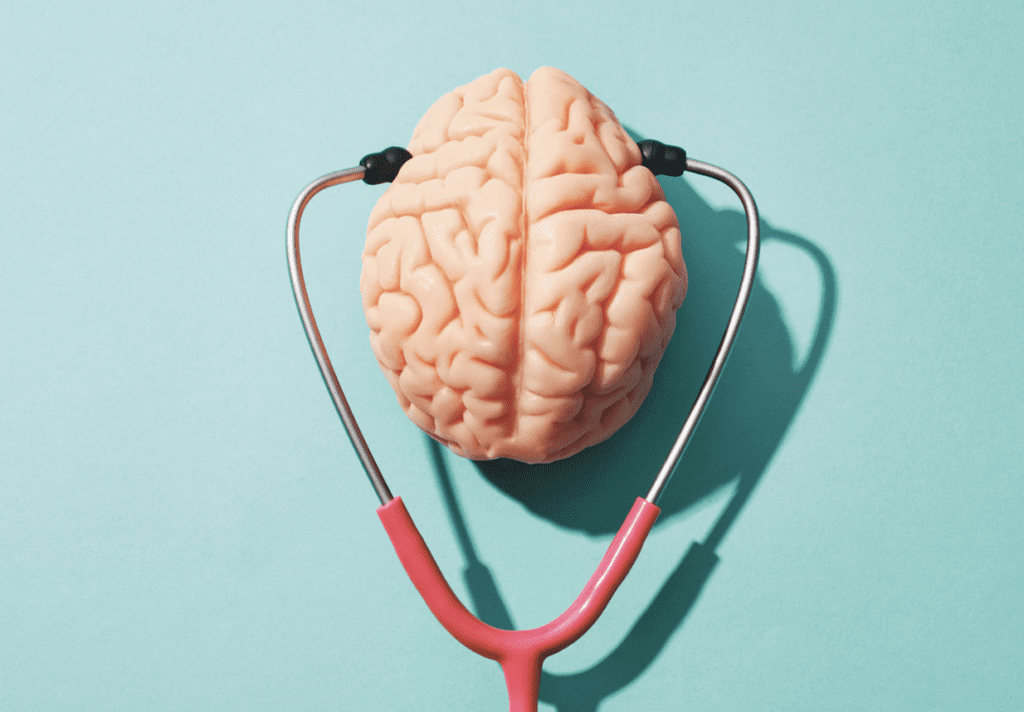
First and foremost, an Achilles tendon injury can be a career-altering event, especially for a professional athlete. Athletes like Rodgers, who rely heavily on mobility and agility, may struggle to return to their previous peak performance levels after such an injury. The fear of re-injury and the painstaking recovery process can be incredibly challenging.
Injury has a significant mental impact on high-performance athletes. The mental and emotional toll of injuries can be just as challenging, if not more so, than the physical aspects.
Athletes often feel frustrated and angry when they cannot train or compete due to an injury. They may be upset with themselves, their bodies, or the circumstances that led to the injury. Extended periods of inactivity or the inability to participate in the sport they love can also lead to feelings of depression, which can present through mood swings, irritability, and a sense of loss.
For many high-performance athletes, their sport is a core part of their identity. When they can’t participate due to injury, they may struggle with an identity crisis, feeling lost without their athletic pursuits. Since the recovery process often involves physical therapy, rest, and time away from the team or training environment, this isolation can lead to feelings of loneliness and detachment from their support system.
It’s important to note that the mental impact of an injury can vary significantly from one athlete to another. Some athletes are resilient and can navigate these challenges effectively, while others may require professional psychological support and counseling to cope with the emotional toll of their injury.
Sports psychologists and mental health professionals can play a crucial role in helping someone like Rodgers manage the psychological aspects of injury, providing strategies for coping, building resilience, and facilitating the rehabilitation process. Additionally, having a solid support system of coaches, teammates, and friends––which we imagine he does–– can make a significant difference in the bounce back from injury, both mentally and physically.
The Road to Recovery
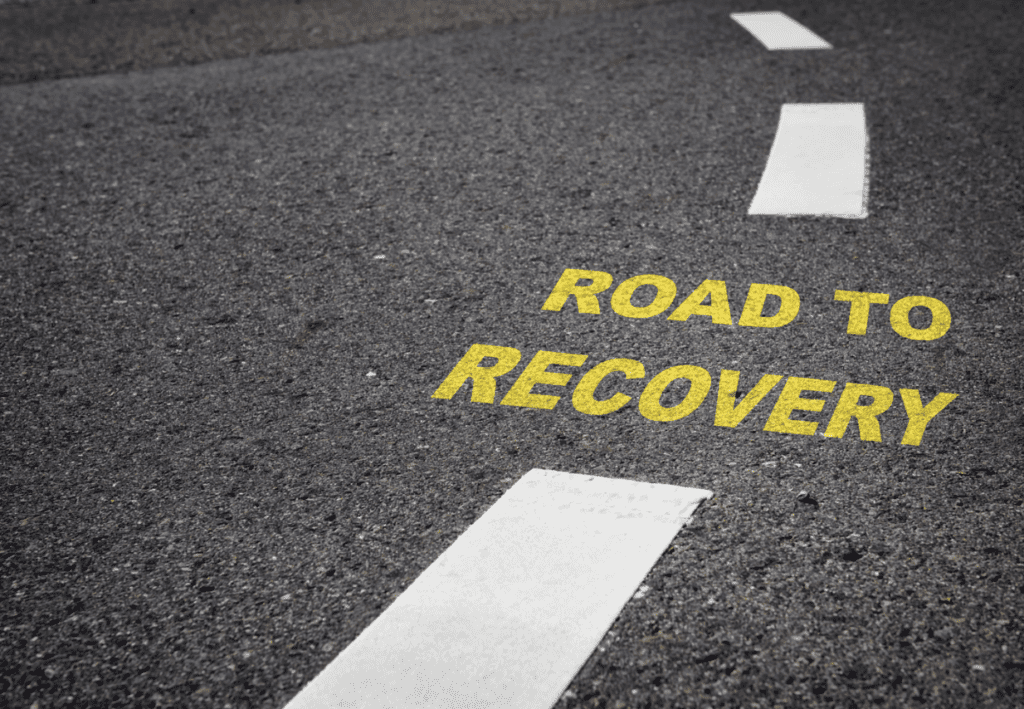
So, what does the road to recovery look like for someone like Aaron Rodgers? It’s a challenging journey, often involving several stages and months of hard work. As reported by several news outlets, Rodgers is weighing his options and consulting various medical professionals for their perspectives ahead of his surgery.
Generally speaking, as the road to recovery depends on numerous factors, the process can look like this:
Immediate Treatment:
In the immediate aftermath of the injury, the focus is on reducing pain and swelling. This typically involves rest, ice, compression, and elevation (RICE). Pain management and anti-inflammatory medications may also be prescribed.
Physical Therapy:
Once the initial pain and swelling subside, athletes begin physical therapy. The goal is to restore range of motion, strengthen the calf muscles, and work on balance and stability. This phase is crucial for preventing future injuries.
Gradual Return to Activity:
Athletes gradually return to sport-specific activities, starting with low-impact exercises and drills. This progression’s pace depends on the injury’s severity and the individual’s response to rehabilitation.
Surgical Intervention:
Surgical repair may be necessary in cases of complete tears or severe injuries. Surgery involves suturing the torn tendon ends back together. After surgery, athletes are often placed in a cast or walking boot for several weeks to protect the repair.
Long-Term Management:
Even after returning to play, athletes with Achilles tendon injuries require ongoing management and monitoring. They may need to modify their training and conditioning routines to reduce re-injury risk.
The Takeaway

In the world of sports, injuries are an unfortunate reality. They can strike even the most skilled and experienced athletes at any moment. Aaron Rodgers’ Achilles tendon injury is a stark reminder of the fragility of an athlete’s career and the physical demands of high-intensity sports like football.
Despite the challenges, many athletes have made remarkable comebacks from Achilles tendon injuries. Names like Kobe Bryant, Terrell Suggs, and Richard Sherman come to mind. These athletes demonstrated unwavering determination, resilience, and a relentless work ethic in their journey back to the top.
As we eagerly await Aaron Rodgers’ return to the field, we can draw inspiration from these athletes’ stories of triumph over adversity. While the road to recovery may be long and arduous, it’s not impossible. And let’s remember that it’s not just about the game; it’s about the people who dedicate their lives to entertaining and inspiring us through their incredible athletic feats.
